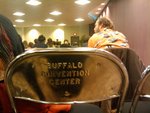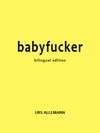People who are interested in interactive fiction but who haven’t played much or any of it ask me for suggestions from time to time — not as often as I’d like, of course, but, luckily, once in a while. I’ve had a page of recommendations up on my site since 2005. The games on that list remain good ones, but I’m now updating those recommendations to take into account games from recent years. I’m posting the new recommendations here. Note that many of the people who ask me about IF are of a literary bent, as am I, and my suggestions reflect that.
A good introduction to interactive fiction does not have to be easy or simple. A game that you have to restart several times, and that you can only scratch the surface of after a few hours of effort, may show you, by being intricate and compelling, why it’s really worthwhile to try to meet the challenges of IF. It seems most important to me that a piece of IF quickly gives a sense of the powerful, interesting play of simulation and language. Such a game might happen to be hard or easy. On the other hand, some good games rely on a player knowing about IF conventions and even particular earlier games, characters, or puzzles. These often aren’t good places for someone just starting. There are many good commercial games from the 1980s and some from more recent times, but in my main list, I’ve limited myself to games that authors have made available for free download.
Although it’s possible to play some IF on the Web, it’s really best to use an interpreter to run all of this interactive fiction; the interpreter is to IF as the Flash player is to Flash and the Web browser is to the Web. There are good interpreters for Windows (Gargoyle) and Mac OS X (Spatterlight) that run IF in all of the major formats; you can also find interpreters for Linux and for smartphones. There are plenty of things you can read to help you play interactive fiction — one that I’d particularly suggest is Emily Short’s PDF introducing interactive fiction — but if you have the chance to play together with someone who knows the conventions of IF and has played a few games before, that will surely be the best way to get into IF.
These are my suggestions for eager first-time IF players, organized by year of release:
Anchorhead by Michael Gentry, 1998
A sprawling horror based on the mythos of H.P. Lovecraft, with exquisite attention to detail and compelling characters and places.
The surface of this game seems to be a confusion of code, error messages, and a small bit of English, but its strange science fiction world is deeply systematic.
Schmidt’s game programming is better known thanks to Guitar Hero but before he coded that up he was inspired by Ben Marcus’s The Age of Wire and String and wrote this piece of interactive fiction, which features an odd lexicon and curious, magical assemblages.
Varicella by Adam Cadre, 1999
A sort of revenge-play, difficult, complex, and worth several attempts. A strange palace holds intrigues, surprises, an array of excellent characters who wander and plot against the player character, the palace minister.
Shade by Andrew Plotkin, 2000
The most famous “one room game in your apartment.” What seems to be a sleepless night undergoes a disturbing transformation as the character, undertaking ordinary actions, uncovers a different reality.
An intricate steampunk piece with that deals with insanity and language and offer several different concluding threads.
A reframing and reworking of Gilgamesh, the first known epic, which combines elements of hypertext-like word selection with the usual command-based IF interface.
Bronze by Emily Short, 2006
Reworks the beauty and the beast legend, embedding memories in an architectural space in compelling ways. It has a special “novice mode” and a status-line compass that will aid players in understanding and navigating IF locations.
A hilarious underground romp that brings every major type of puzzle together in miniature form. The really wonderful aspect is the orcish, semi-literate narration that is used throughout.
Violet by Jeremy Freese, 2008
A graduate student locks himself in his office to try to make progress on his dissertation. The puzzles, as the player seeks to overcome distraction, are amusing, but the atmosphere and the voice of the character’s absent, imagined girlfriend are extraordinary.
◊
I still like all of the pieces I originally suggested, but, in the interests of bringing in some newer games while making only ten main suggestions, I’m moving these here: Aisle, by Sam Barlow, 1999; Dangerous Curves, by Irene Callaci. 2000; The Edifice, by Lucian Paul Smith, 1999. Savoir-Faire, by Emily Short, 2002. And, in case you feel comfortable obtaining (previously) commercial games from abandonware sites or want to quest for them on eBay, I’ll also mention A Mind Forever Voyaging, by Steven Meretzky, Infocom, 1985; Mindwheel, by Robert Pinsky, Brøderbund/Synapse, 1984; Suspended, by Michael Berlyn, Infocom, 1983; Trinity, by Brian Moriarty, Infocom, 1986; and Wishbringer, by Brian Moriarty, Infocom, 1985. Note that reading or at least looking over the documentation to these commercial games is often very useful, and sometimes essential, in getting started with them.
Does anyone else have other good IF starting points to suggest? Or, does anyone want to report experiences of delight or frustration with one of these ten games?










